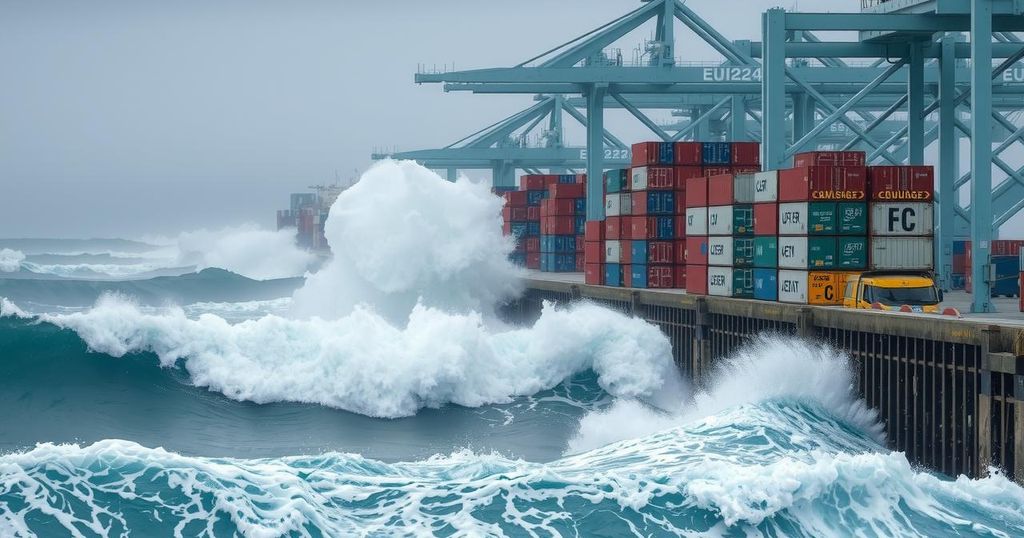Ecuador and Peru are experiencing extreme wave activity, reaching up to four meters, resulting in port closures and at least two fatalities. Officials attribute these conditions to climate change, warning of ongoing risks to coastal communities and significant disruptions to the fishing industry.
Coastal regions of Ecuador and Peru are currently facing significant challenges due to waves reaching heights of up to four meters, resulting in the closure of numerous ports and the tragic loss of at least two lives, according to officials. Jorge Carillo, Ecuador’s risk management secretary, described the event as extreme, suggesting that similar occurrences may happen in the future. The fatalities were reported in Manta, Ecuador, where residents have been cautioned about ongoing hazards from the ocean.
In Peru, the waves have prompted the closure of nearly all ports. Enrique Varea, the head of the naval Oceanographic Department, indicated that the high waves are projected to persist for several more days, although a slight calming is anticipated starting Monday, with conditions returning to normal by early January. He and experts attribute these unusual wave patterns to climate change impacts, as noted by Larry Linch, the head of Civil Defense in Callao.
Local media coverage revealed submerged public spaces and jetties in Peru, leading to evacuations of residents seeking higher ground. The waves, which are generated by winds off the U.S. coast, have severely impacted the fishing industry; many boats have sustained damage and fishing operations have been largely halted. One fisherman lamented the loss of approximately 100 boats and expressed disbelief at the severity of the conditions, stating, “I’m 70 years old and I have never seen such unusual and strong waves.”
Rescue operations have been conducted, with thirty-one fishermen saved by the Peruvian navy amidst the dangerous conditions. However, reports indicate that approximately 180 others are still stranded at sea. In Chile, waves have similarly affected coastal regions, instigating warnings from local authorities. Callao, which is adjacent to Lima and houses Peru’s largest port, has enacted further safety measures including beach closures for tourism and fishing vessels.
Mayor Roberto Carrillo Zavala emphasized the economic repercussions for local fishermen and infrastructure, stating, “There is a major problem.” The phenomenon of large waves commenced on Christmas and is expected to persist until January 1, according to the National Emergency Operations Center in Peru.
The recent extreme wave activity affecting Ecuador and Peru highlights a growing concern regarding climate-induced oceanographic phenomena. With changing weather patterns resulting from climate change, coastal communities are increasingly vulnerable to unusual and severe weather events. This situation not only endangers lives but also poses a significant threat to local economies that rely heavily on fishing and maritime activities. Understanding the impacts of climate change is crucial for preparing and mitigating the effects of such natural events.
The significant and dangerous waves impacting the coasts of Ecuador and Peru have resulted in the tragic loss of lives and considerable economic disruption, particularly within the fishing industry. Authorities have initiated protective measures, including the closure of ports, to safeguard coastal communities. As officials look to the future, the potential for similar events underscores the importance of addressing climate change and its associated risks.
Original Source: www.voanews.com






